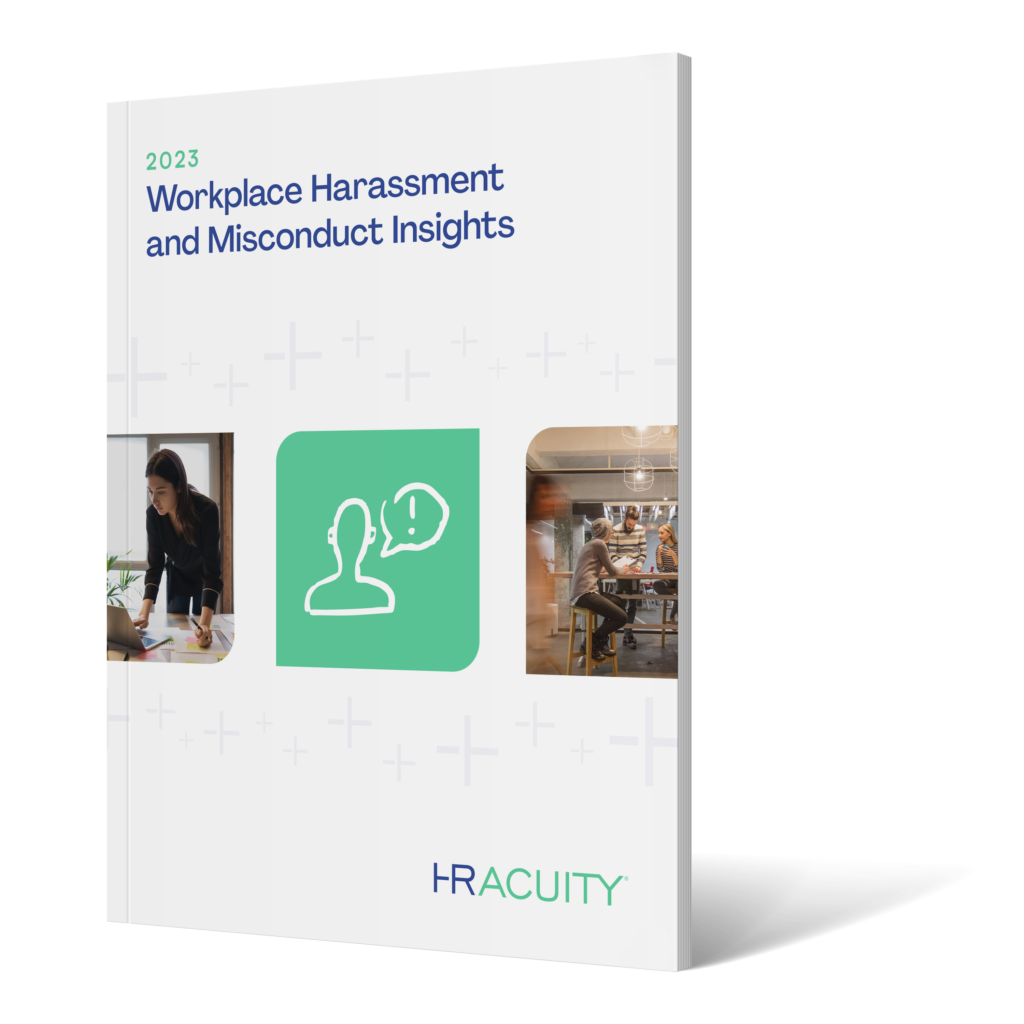A hostile environment in the workplace is an illegal form of harassment, discrimination and other offensive behaviors. This can have a lasting impact on your employees – and lead to employee dissatisfaction, lack of engagement and turnover. In this blog, we’ll review what consists of a hostile environment in the workplace, along with examples, signs and how to address it.
What is a hostile work environment?
Sometimes, employees may encounter situations at work that make them uncomfortable, intimidated and/or afraid. But a true hostile work environment must meet specific legal criteria set by the EEOC. This includes unwelcome conduct such as harassment, discrimination, victimization, violence and other types of offensive behavior that are based on race, color, religion, sexual orientation, gender identity, pregnancy, national origin, disability and more.
Learn More About Workplace Harassment and Employee Misconduct from HR Acuity’s 2023 Study
Workplace Harassment and Misconduct Insights
Learn how to build a trusting, safe work environment.

What qualifies as a hostile work environment?
There are legal requirements to determine what constitutes a hostile work environment. The criteria for a hostile work environment include behavior that is:
- Pervasive, severe and persistent
- Disruptive or detrimental to the complainant’s work
- Known to the employer but not adequately addressed
According to the EEOC, workplace harassment becomes unlawful when “enduring the offensive conduct becomes a condition of continued employment”. A complainant does not have to prove there was a threat of firing, negative performance reviews or withheld assignments.
When conducting a hostile work environment investigation, it’s important to understand the threshold that behavior must cross before it becomes actionable. You’ll likely interview the complainant, witness(es) and the subject(s).
What is not considered a hostile work environment?
An environment that is merely unpleasant or irritating is not considered a hostile work environment. Instances like personality conflicts, rudeness, annoyances, petty offenses and isolated incidents also do not qualify as elements of a hostile work environment.
For example, an isolated incident where your supervisor raises their voice at you is usually not enough to be considered a hostile work environment. Additionally, if a supervisor or coworker is rude to everyone regardless of their background, it is unlikely to be considered a hostile work environment.
Signs of a hostile work environment
Although the factors of a hostile work environment vary, there are some indicators you can look out for. Signs of a hostile work environment include but are not limited to:
- Employee performance changes
- Discrimination
- Physical or verbal aggression
- Sexual harassment
- Isolation and exclusion
- Unfair policies
- Absenteeism
- Employee burnout
- Increased employee attrition or turnover
Hostile work environment examples
A hostile environment in the workplace may look or sound like any mix of discriminatory or inappropriate behavior. Some examples of conduct that may constitute a hostile work environment include:
- Offensive, discriminatory or racist jokes
- Insults, slurs, name-calling and offensive nicknames
- Unwanted physical contact, assaults or threats
- Mockery, intimidation, hazing or ridicule
- Use of sexually explicit language
- Sexually suggestive pictures, objects or behavior
- Ongoing microaggressions
- Exclusionary practices or behaviors towards a certain demographic/group
Protect your employees with HR Acuity
A hostile work environment can be detrimental to your employee base and company culture. It can affect retention rates, engagement levels and employee referrals. In fact, 30% of employees who experience harassment have left their organization.
Addressing a hostile workplace environment is critical to improve the employee experience and increase employee satisfaction. But issues can only be dealt with when companies are aware of them, which isn’t always the case. According to the 2023 Workplace Harassment and Misconduct Insights, 42% of employees who experienced an incident of workplace harassment or misconduct did not report it.
Organizations are responsible for providing a safe, secure environment where their employees feel comfortable enough to speak up. And reported issues are essential to resolution and prevention of potential hostile work environments. Anonymous reporting tools encourage employee candor and gain insight into any workplace issue, including a hostile work environment.
Once a case of a hostile work environment has been reported, investigations must be treated fairly and consistently. An investigations management solution like HR Acuity can ensure everything is properly documented, that processes are standardized and no detail is left out.
HR Acuity is the industry-leader in HR case management and investigations technology. We have helped hundreds of customers like Lyft, LinkedIn and General Mills improve their workplace culture and rectify workplace issues.
To learn more about how HR Acuity can help you take control of and improve your work environment, and assist with hostile work environment investigations, schedule a demo today.



